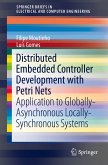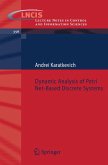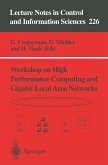Dieser Download kann aus rechtlichen Gründen nur mit Rechnungsadresse in A, B, BG, CY, CZ, D, DK, EW, E, FIN, F, GR, HR, H, IRL, I, LT, L, LR, M, NL, PL, P, R, S, SLO, SK ausgeliefert werden.
"The book represents an excellent guide for learning, teaching and developing researches in the field of Petri nets (PNs). ... the authors provide complex material, gradually structured, which ensures its efficient utilization at different levels of knowledge. Thus, the book is highly recommended to a large group of potential readers, from undergraduate students who want to become acquainted with the fundamental concepts, to PhD students and research fellows who are interested in the most recent progress of theory and applications." (Octavian Pastravanu, Zentralblatt MATH, Vol. 1074, 2005)









